Ventilation in a two-story private house: options for organizing trouble-free air exchange
The microclimate in the house is of great importance, and its condition depends on whether the ventilation system is so properly equipped. This affects not only the well-being of the inhabitants. Without effective air exchange, humidity increases, as a result, condensation appears, the tree begins to rot, the metal rusts.
In order to avoid such troubles, you need to know how to make ventilation in a two-story house correctly, so that life in it is comfortable.
From the article we have proposed, you will learn all about the options for constructing systems that provide the necessary air exchange for life. We will introduce the features of the organization of ventilation of two-story buildings. Let's talk about how the calculations are made for the correct selection of equipment.
The content of the article:
Existing types of air exchange
Based on the method of inducing air movement, there are three types of air exchange:
- natural;
- forced;
- mixed.
Each of these species has inherent advantages and disadvantages. To understand which option has more advantages, you need to familiarize yourself with all the details.
Natural ventilation
For natural air exchange in a two-story house, installation of equipment that stimulates air movement is not necessary. Everything here is based on the rules of physics - gravity, the principles of changing the pressure of gases.
Gravity circulation occurs due to leaks between structural components in windows, doors. Due to a change in physical condition, air masses that have penetrated from the street inside move independently into vents, the system ventilation ducts. In this case, the heat transfer of the premises increases.
A typical solution for private two-story houses is a ventilation duct located vertically and displayed on the roof.This is ideal for a newly built house, since the box must be provided for in the project and installed during the construction process.

Uninterrupted service of the natural ventilation system in a private two-story house is impossible without good traction.
It depends on a number of indicators:
- temperature differences inside and outside its external walls;
- the height of the shaft and its section;
- wind, worsening or improving traction;
- channel insulation quality;
- the presence of turns, bends in the duct.
When the temperatures inside and outside are balanced, traction deteriorates. A significant increase in outside temperature leads to the appearance of reverse thrust. The way out is a large ventilation shaft.
Air enters the premises such as the dining room, bedroom, living room, and is removed through the premises for household purposes. The first of them are called dry, and the second - wet. Thus, dry air enters the house, and moist air is removed.
Supply air masses enter the house through the supply valves installed in the walls. When necessary, they can be blocked. When the system is installed, the inlet channels are made from below, and the outlet channels are made from above so that they exit onto the roof.
Such a construction is based on the fact that cold air, which tends to displace warm, will always be below, and warm above. Air between rooms circulates through a gap at the bottom of the door, at least 1.5 cm.
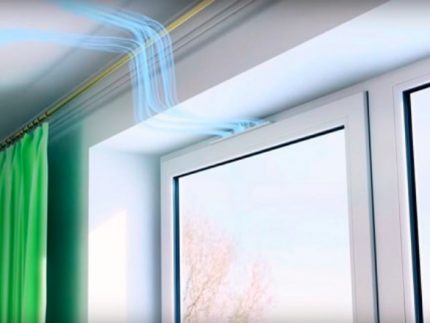
The use of a natural air exchange scheme is justified if the house is located in an area where the air is really clean. The operation of such a system does not require additional energy costs. If the circuit meets all the requirements, the air exchange rate can be adjusted.
Forced ventilation of a two-story house
The operational parameters of a forced-type hood in a two-story private house are much higher than those of a natural one, since additional equipment is involved in the air exchange. There are three varieties of the forced air exchange system according to the principle of functioning: supply, exhaust, supply and exhaust.
According to their functional purpose, mechanical ventilation is divided into two categories - local and controlled. The first works only in one specific place, and the second in the future can completely ventilate the house. An example of local exhaust ventilation is a cooker hood.
The exhaust air flows are removed through a channel with access to the roof. As in the case of natural ventilation, the air inlet openings are located in dry rooms, and the exhaust openings are in rooms with high humidity.
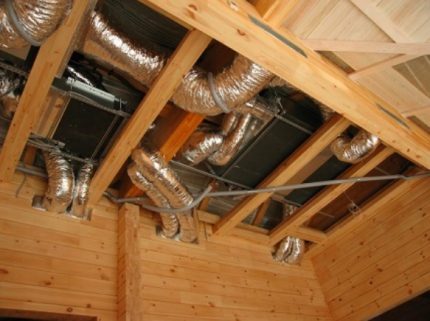
The benefits of forced ventilation are as follows:
- intensive air circulation due to the high discharge rate;
- elimination of the influence of external factors;
- controllability process
- the ability to pre-prepare incoming air masses.
For the supply air circuit, the same supply valves are used as for natural ventilation. The only difference is the presence of a fan forcing air into the room. Install it in the duct laid in the wall. From the side of the room, the canal is closed with a lid, and from the street - with a grill so that dust, various living creatures, and rainfall do not get inside.
Install supply valve not difficult.A hole is made in the wall using a drilling machine or a perforator. Then they clean it, lay the air duct, mount the valve and the protective grill.
More advanced functionality breather. A fan, protective grilles, an air duct are also present here. But besides this there are sensors that control humidity, temperature, if necessary, they automatically start the equipment.
Most breathers equipped with a built-in convector heating the air entering the room. This allows you to maintain a constant temperature, which is not only comfortable, but also reduces heating costs.
Equipment for organizing a ventilation system in a private house with two floors is mounted in places where air removal is absolutely necessary - in the kitchen, sanitary unit.
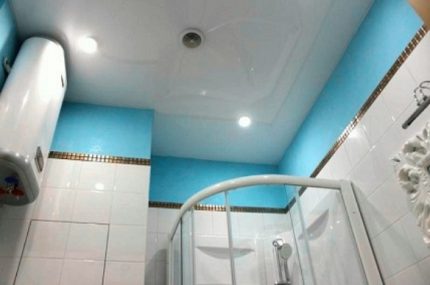
A fan is also used as exhaust equipment for the bathroom. Place it at the entrance to ventilation ductthen masked with a protective grill. He copes well with normalizing the level of humidity in the room.
Unpleasant odors and grease must be removed from the kitchen along with moist air. Cooker hood mounted above the hob and connected to the ventilation duct. The fan located inside the equipment draws and removes the exhaust air masses from the room.
In a large two-story house, a forced exhaust system may not be effective enough. This is explained by the fact that dirty air is forcibly removed, and fresh air comes naturally in a small amount. In these conditions, a more acceptable option is supply and exhaust ventilation.
To use this combined system, air enters and exits through fans. The building envelope must be highly airtight. Often the role of supply equipment is played breathers, and in wet rooms mounted exhaust mechanisms.
Thus, the air exchange rate increases, and the volume of air masses both introduced and removed will be under control. In more powerful systems, in addition to the supply and exhaust equipment, there is heating or cooling. Sometimes additionally install humidifying and filtering air devices. Most complex systems are equipped with a recuperator.

Supply air jets, before entering the house, pass through a heat exchanger, meeting with warm air rushing out. Structurally, the unit is designed so that air avalanches do not mix, but a warm stream heats a cold one. The latter comes to the house already warm.
In all respects, forced centralized ventilation with recovery is the most advanced way to equip a ventilation system, since it allows you to solve many problems at once:
- establish optimal air exchange throughout the house without orientation to weather conditions;
- supply air preparation;
- automate and regulate the air exchange in a significant range, based on their different microclimate indicators in individual rooms;
- save heat energy.
The implementation of the compulsory scheme is associated with considerable financial costs. The equipment that is part of it requires periodic maintenance. In addition, such a ventilation model for its work requires the constant presence of electricity.
It is advisable to provide backup power when installing a forced ventilation system in a two-story house. It will come in handy not only to maintain the indoor microclimate, but will also allow you to use all the other benefits of civilization.
Mixed Type Specifics
The mixed type of ventilation involves the use of both a gravitational scheme and a mechanical one, i.e. forced. Typically, in such systems, ventilation devices that provide air exchange in a two-story house, fans are installed on both exhaust components and supply.
Depending on the state of the atmosphere and the microclimate inside the house in mixed systems, either an exhaust or an inflow is included. At hood activation air masses from the street will spontaneously flow into the vacant rarefied space. If the inflow is started, the forced air will itself displace the excess.
Features of the organization of ventilation of the second floor
Natural ventilation of the second floor can be organized in two ways. The first of them involves the presence of an entrance door that blocks the flow of air from below. Thus, the airspace is divided into independent blocks.

The airspace of the floors can also be divided using the door installed in front of the stairs leading up.
The natural ventilation scheme of the second floor is similar to the scheme of the first:
- Through the wall or window supply valve, clean air enters the rooms.
- Through leaks or overflow The air flows from the rooms to the bathroom and other auxiliary rooms.
- "Dirty" air flows through the ventilation shaft.
Supply valves are mounted in living rooms, exhaust valves - in the dressing room, hall, bathroom. Leave all the doors overflow slots or install gratings.
In order for the ventilation to function normally, it is necessary not only to ensure the integrity of the entrance door to the floor. It is also necessary to eliminate other ways of a possible overflow of air jets between floors - places where communications pass, leaks in the floors.
The second method is used when the layout is made so that a door is not provided from the stairs to the second floor. Here, individual isolation of the air space of each room is performed.
For this purpose, supply air valves are cut in all the rooms of the second floor, and the doors are sealed and constantly keep them closed. For the removal of contaminated air masses in the premises provide channels of natural ventilation.
The disadvantage of the second method is the need to increase the number of ventilation ducts. Ideally, each room should have an individual canal ending on the roof.

The combination of ventilation ducts degrades the system. There are times when it is still necessary to do this, but even if such an option is chosen, the design will turn out to be rather complicated.
There are circumstances in which it is not always possible to create the necessary air exchange using natural ventilation on the top floor:
- It is almost impossible to completely eliminate air exchange between floors.
- The ventilation channels of the second floor have a lower height, therefore, the traction force in them is lower compared to the lower level channels.
For these reasons, to ensure a comfortable environment, it is better to use forced exhaust ventilation.
Calculation of the main parameters of the ventilation system
For effective ventilation in a two-story house, a preliminary calculation is necessary, based on air exchange standards specified in SP 55.13330.2011. The main purpose of the calculation is to determine the size of the channels in accordance with the volume of exhaust air.
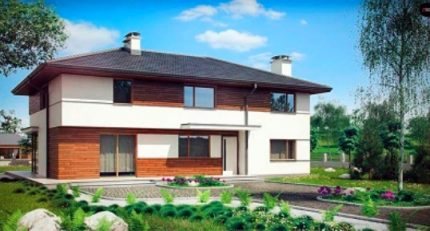
The calculation is done for each floor, observing the following sequence:
- According to Table 1 of the Building Rules, the total minimum amount of air (Qп) coming from the street in the amount necessary for ventilation of rooms equipped with supply valves is found.
- From the corresponding section of the standards select the total minimum amount of air mass to be removed (Qv) from all rooms equipped with an exhaust duct.
- The obtained minimum parameters (Qп and Qв) are compared. A large value will be the smallest calculated air capacity (Qp) of all exhaust shafts on the floor.
- Based on the value of the height of the house, choose the size of the shaft on the floor vertically.
According to the height of the ventilation shaft and the minimum productivity of the channels located on the second floor, the number of shafts is selected according to a special table.
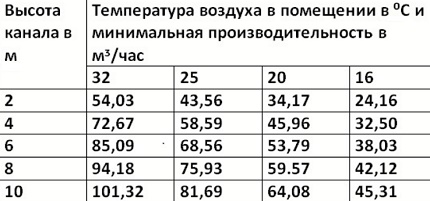
The selected standard channels should have a total capacity in mᶾ / h not less than the calculated Qр. The mines are distributed between rooms so that a normative air exchange is ensured in each of them.
If it turns out that air speed and duct performance is insufficient, then increase the shaft length or cross section. To ensure equivalent traction in each duct, all channels on the floor should have the same length.
It should be noted that the above calculation scheme is a simplified version. Professional calculation is much more complicated and only a specialist can do it.
Conclusions and useful video on the topic
The author of this video spoke about creating ventilation in a private house and solving problems that arise during its installation:
The installation process of the ventilation is shown in the video clip:
Reasonably executed ventilation system in the house is the key to the health of people living in it. But this is not her only task - she must save the structural elements of the building from gradual destruction under the influence of high humidity.
Information about the types of ventilation systems, operating features will help you choose the best option for optimal air exchange in the house.
Please write comments in the block form below. Tell us about how you arranged the ventilation system in your own country house or a two-story cottage. Share useful information on the topic of the article, because it can be very useful to site visitors.

 Cottage ventilation: options for organizing an air exchange system + device rules
Cottage ventilation: options for organizing an air exchange system + device rules 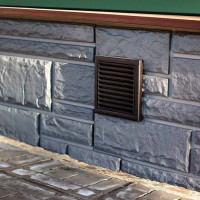 Natural ventilation in a private house: rules for arranging a gravitational air exchange system
Natural ventilation in a private house: rules for arranging a gravitational air exchange system 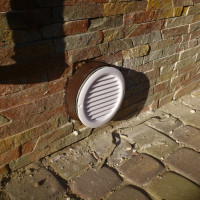 Ventilation of the foundation of the house: rules and options for organizing air exchange
Ventilation of the foundation of the house: rules and options for organizing air exchange 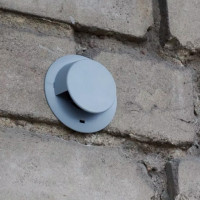 Ventilation in a private house from aerated concrete: options and methods of construction
Ventilation in a private house from aerated concrete: options and methods of construction 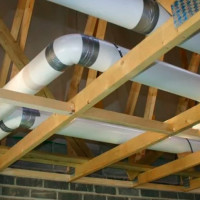 Ventilation from plastic sewer pipes in a private house: the possibility of construction and the best options
Ventilation from plastic sewer pipes in a private house: the possibility of construction and the best options 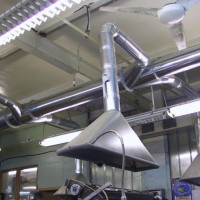 Ventilation of industrial premises: rules for the organization of air exchange
Ventilation of industrial premises: rules for the organization of air exchange  How much does it cost to connect gas to a private house: the price of organizing gas supply
How much does it cost to connect gas to a private house: the price of organizing gas supply  The best washing machines with dryer: model rating and customer tips
The best washing machines with dryer: model rating and customer tips  What is the color temperature of light and the nuances of choosing the temperature of the lamps to suit your needs
What is the color temperature of light and the nuances of choosing the temperature of the lamps to suit your needs  Replacement of a geyser in an apartment: replacement paperwork + basic norms and requirements
Replacement of a geyser in an apartment: replacement paperwork + basic norms and requirements